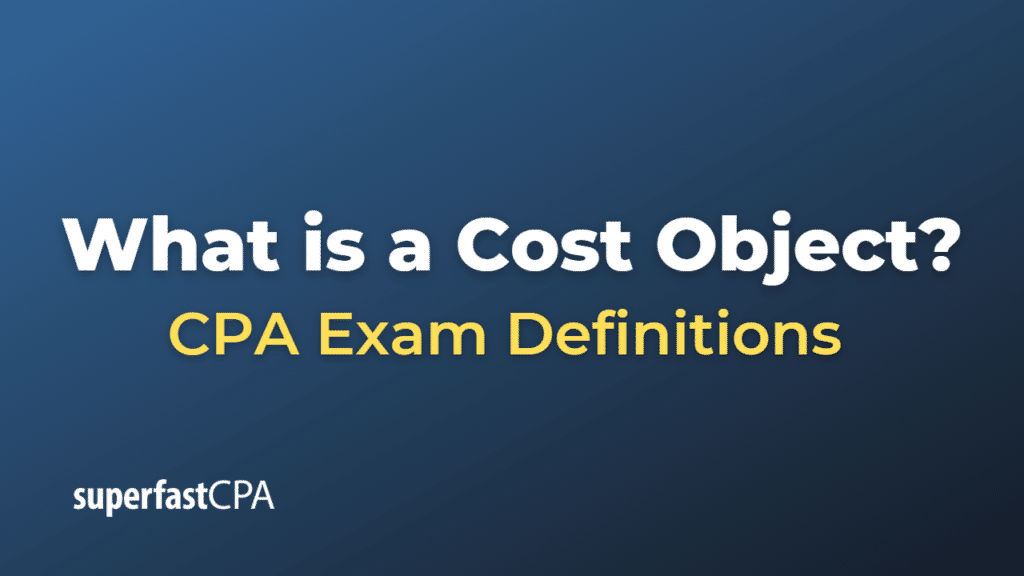Cost Object
A cost object is anything for which a separate measurement of costs is desired. In other words, it’s a term in cost accounting that refers to a product, a service, a project, a customer, or an activity, among other things, that costs are assigned to.
Cost objects play a vital role in business and managerial accounting because they help managers understand the economics of running different parts of their business. By accurately assigning costs to cost objects, a company can determine the profitability of individual products, services, projects, or activities.
For example:
- In a manufacturing company, each product it produces could be a cost object. The company would want to know how much it costs to produce each product to price it correctly and ensure it’s profitable.
- In a service company, each service offered could be a cost object. The company would need to know the cost of providing each service to determine its profitability.
- In a project-based company, each project could be a cost object. The company would want to know the cost of each project to ensure it’s staying within budget and earning a profit.
- For a company that tracks costs by customer, each customer could be a cost object. The company would want to know the cost associated with serving each customer to understand the profitability of different customer relationships.
Identifying cost objects is the first step in cost allocation, which involves assigning costs to cost objects based on cost drivers, or the activities that cause costs to occur.
Example of a Cost Object
Let’s consider a hypothetical company, “BakeDelights,” a bakery that makes and sells a variety of pastries.
In BakeDelights, each type of pastry (e.g., croissants, muffins, cookies) can be considered a cost object. The company would want to determine the cost of making each type of pastry to ensure they’re priced appropriately and profitably.
For instance, to calculate the cost of making croissants (the cost object), the company would consider:
- Direct Materials: This includes the cost of flour, butter, yeast, and any other ingredients used directly in making the croissants.
- Direct Labor: This includes the wages of the bakers who are making the croissants.
- Indirect Costs: These are costs that can’t be directly linked to the production of croissants but are part of the overall operational costs, such as the rent for the bakery, utilities, and depreciation on baking equipment. These costs would typically be allocated to different cost objects based on a reasonable method of apportionment. For example, electricity costs might be allocated based on the amount of time each type of pastry spends in the oven.
By accurately assigning these costs to the cost object (croissants), BakeDelights can determine the total cost of producing croissants and can then set a selling price that covers these costs and provides a reasonable profit. Similarly, they would do this for all other pastries they produce.
This kind of cost accounting can help BakeDelights identify which products are most profitable, which are least profitable, and where there might be opportunities to reduce costs or adjust prices.













